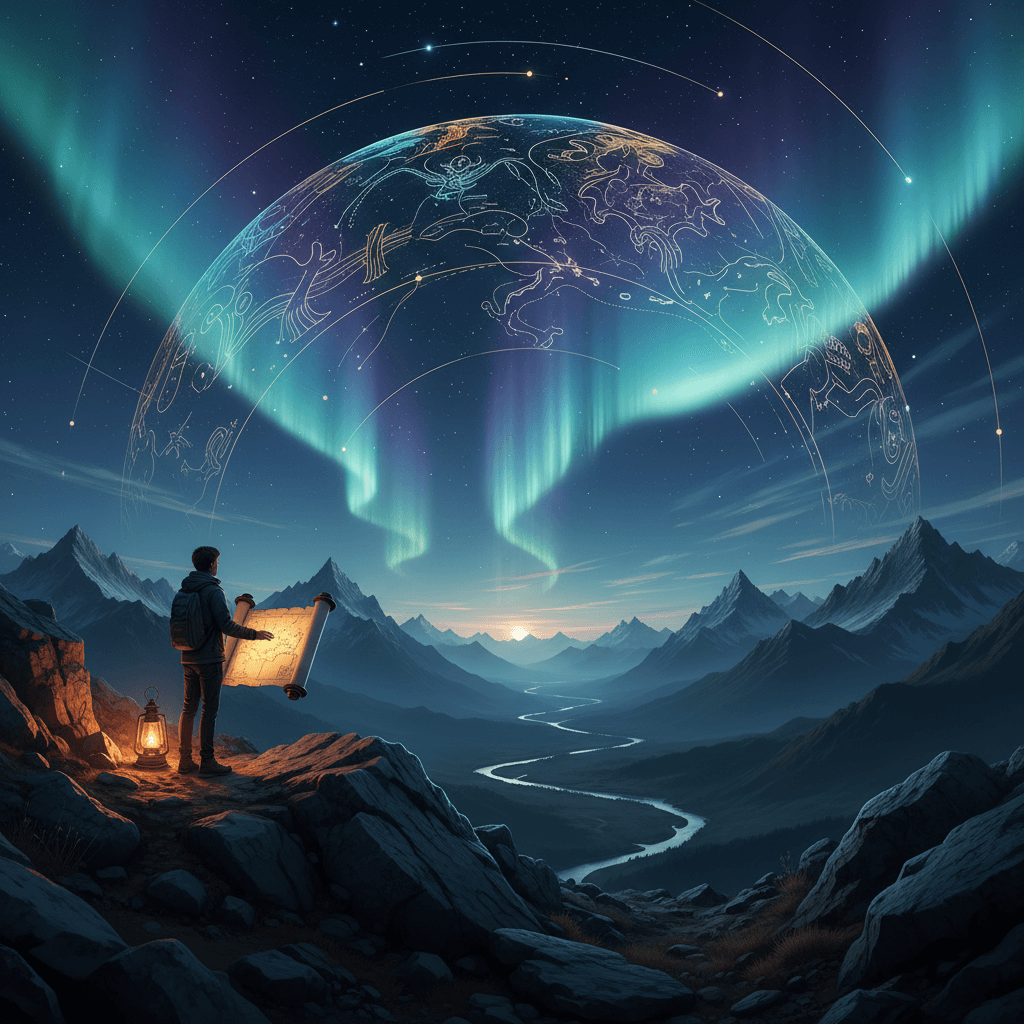Let Wonder Rechart the Geography of Your Life

Make space for wonder; it will redraw the map of your life. — Virginia Woolf
An Invitation to Rechart the Ordinary
Woolf’s charge to “make space for wonder” suggests that awe is not a garnish but a generative force. In her autobiographical sketches, Moments of Being (published 1976), she describes sudden “shocks” when reality grows luminous, interrupting the flatness of routine. Such moments don’t just decorate life; they reorganize it, revealing paths we had overlooked. Consequently, wonder acts like a pen that redraws borders—turning familiar streets into new territories of meaning.
Maps, Journeys, and the Territory Within
From this spark, consider the map itself. Alfred Korzybski’s maxim in Science and Sanity (1933)—“the map is not the territory”—reminds us that our life-plan is only a model. Woolf’s To the Lighthouse (1927) similarly uses a literal journey to expose the interior voyages of its characters, showing how perception continually remakes the route. Thus, when wonder intervenes, the model updates; valleys of avoidance become navigable trails, and former cul-de-sacs open into vistas.
Creating Room: Attention as Architecture
If wonder redraws the map, attention builds the drafting table. In A Room of One’s Own (1929), Woolf argues for literal and figurative space as preconditions for creation. Today, that might mean carving “micro-sabbaths” into the calendar or taking a 10-minute dawn walk without headphones. One reader reports tracing the shifting colors on a brick wall each morning; within weeks, her commute felt less like a tunnel and more like a gallery. By designing attention, we make structural room for awe.
What Awe Does to Mind and Time
Empirical work shows why wonder is transformative. Dacher Keltner and Jonathan Haidt (2003) describe awe as a response to perceived vastness that requires cognitive accommodation—a mental remodeling. Experiments find that awe expands time perception and enhances well-being (Rudd, Vohs, and Aaker, Psychological Science, 2012), while it also increases prosociality via the “small self” (Piff et al., Journal of Personality and Social Psychology, 2015). Nature exposure can even reduce rumination and subgenual prefrontal activity (Bratman et al., PNAS, 2015). In short, awe softens rigid maps and invites new routes.
Wonder as a Compass for Choice
As the mind loosens, choices shift. Narrative-identity research suggests we live by the stories we tell (Dan McAdams, 1993), while Acceptance and Commitment Therapy urges values-led action amid uncertainty (Hayes, Strosahl, and Wilson, 1999). After attending a night-sky program, a burned-out attorney began volunteering at a planetarium; months later, she reoriented her practice toward environmental law. Wonder didn’t dictate her destination—it clarified her north, aligning decisions with enlarging experiences rather than shrinking obligations.
Shared Awe and the Ethics of Scale
Moreover, wonder becomes contagious in community. Astronauts report the “overview effect”—a shift toward planetary stewardship when seeing Earth from orbit (Frank White, 1987). On a smaller scale, neighborhood “star parties” or museum late nights replicate this widening gaze. Consistent with Piff et al. (2015), groups that cultivate awe often display greater humility and generosity. Consequently, a redrawn personal map radiates outward, reconfiguring the social terrain with more bridges than borders.
Keeping the Map Alive
Finally, maps must be living documents. Woolf’s Mrs Dalloway (1925) is stitched with luminous instants that keep characters’ inner geographies from calcifying. A practical rule follows: schedule one deliberate encounter with vastness each day—sky, symphony, scripture, or science—and annotate the shift it sparks. Over time, these notations accumulate into new routes and destination points. Thus, by making room for wonder, you allow your life’s cartography to stay accurate to what is possible, not merely to what is already known.